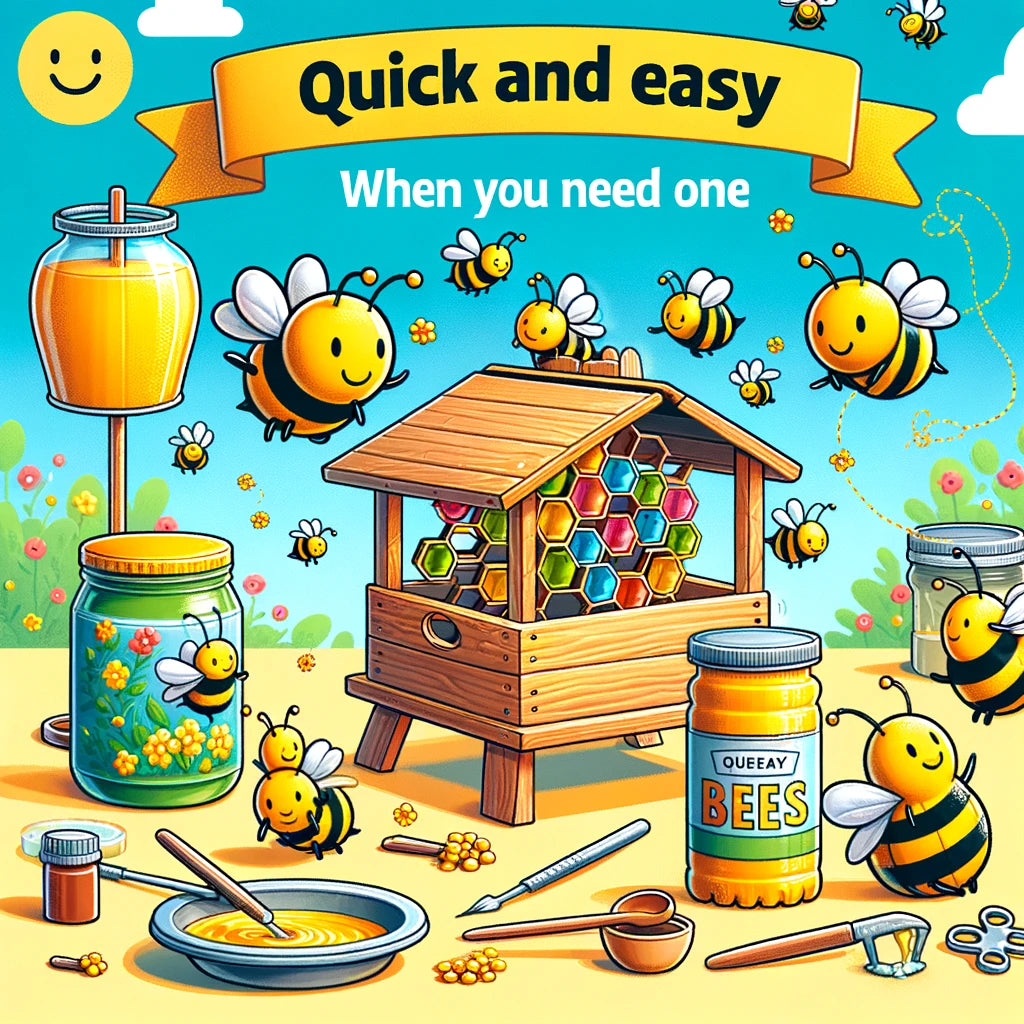
Homemade Bee Feeders: You Can Make Quick and Easy When You Need One
Bees hold a pivotal role as pollinators, essential for the health of our ecosystems and the bounty of our gardens. As environmental stewards, we recognize moments when these vital insects could use our support—be it due to a shortfall in natural nectar sources or adverse weather conditions. To this end, crafting a homemade bee feeder emerges as a simple yet profoundly impactful act of assistance.
This guide is dedicated to those who, though not beekeepers, are keen on contributing to the well-being of bees. We will delve into the creation of two straightforward, efficient types of bee feeders: the baggie feeder and the mason jar feeder. Both can be made quickly, easily and with materials likely already at your disposal. Let's embark on this journey of crafting sustenance for our buzzing allies.
Baggie Feeder: The Ultimate in Simplicity
The baggie feeder wins hands down for ease and cost-effectiveness. It's a straightforward way to provide sugar water to bees, requiring minimal materials and effort.
What You'll Need:
- A gallon-size zip-seal plastic baggie
- Sugar and water (in equal parts)
- A shallow container or an empty hive body
- Small sticks or stones
How to Make It:
Sugar Solution: Mix sugar with water until fully dissolved. This concoction mimics nectar and serves as a quick energy source for the bees.
Filling: Pour the sugar solution into the baggie until it's about halfway full, then seal it, making sure it's leak-proof.
Slit and Lay: Place the baggie flat in your chosen container. Then, make a few small slits on the top for the bees to access the sugar water, ensuring they're not too large to prevent drowning.
Elevation Is Key: Inside the container, place small sticks or stones around (but not on) the baggie to help any bee visitors avoid getting trapped in the liquid.
Placement Tips:
- Locate your feeder near bee activity but away from the direct entrance of any nearby hives to reduce traffic jams.
Mason Jar Feeder: Durability Meets Function
For those seeking a more lasting solution, the mason jar feeder is your go-to. It's ideal for offering water or sugar solution and can withstand the elements better than its baggie counterpart.
What You'll Need:
- A mason jar with its lid
- A nail or a small drill
- Sugar and water
- A plate or shallow bowl
How to Make It:
- Prepare the Lid: Punch several small holes in the lid—large enough for the bees to drink from but small enough to prevent the sugar water from pouring out.
- Mix the Solution: Create a sugar solution with equal parts sugar and water, stirring until the sugar dissolves completely.
- Jar It: Fill the mason jar with the solution, screw the lid on tightly, and invert it over a plate or shallow bowl to catch any drips.
Placement Tips:
- Set the feeder in a stable, shaded spot near bee activity. Elevating the jar can help keep ants and other pests at bay.
Final Thoughts and Tips
Creating these feeders not only supports our buzzing friends but also contributes to the health of our local ecosystems. Here are a few additional tips to ensure your bee-feeding success:
- Opt for pure white sugar; brown sugar and other types can be harmful to bees.
- Regularly clean and refill your feeders to avoid mold and fermentation.
- Placing feeders in shaded areas helps keep the sugar solution from fermenting too quickly.
Through these simple DIY feeders, you can play a vital role in supporting bees, especially during times when natural food sources are scarce. Happy bee feeding!
Frequently Asked Questions About Homemade Bee Feeders
Q: What materials do I need to make a homemade bee feeder?
A: For a baggie feeder, you'll need a gallon-size zip-seal baggie, sugar, water, and a shallow container. For a mason jar feeder, gather a mason jar with a lid, sugar, water, and a plate or shallow bowl.
Q: Where should I place the feeders?
A: Position feeders near bee activity but away from direct hive entrances to prevent congestion. Ensure the spot is shaded to slow the fermentation of the solution.
Q: How often should I clean and refill the feeders?
A: Clean and refill your feeders regularly to prevent mold growth and fermentation, ideally every few days or as needed, based on consumption and weather conditions.



Leave a comment